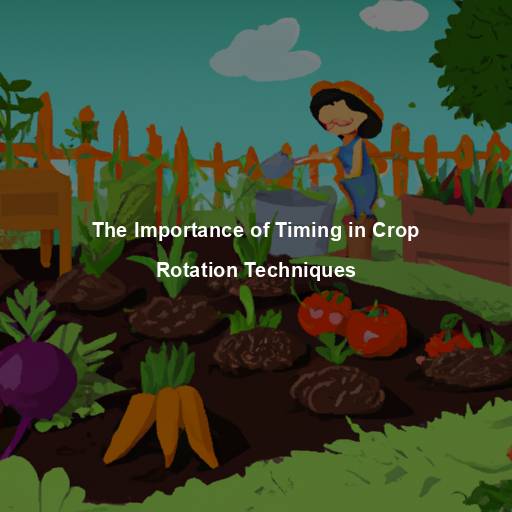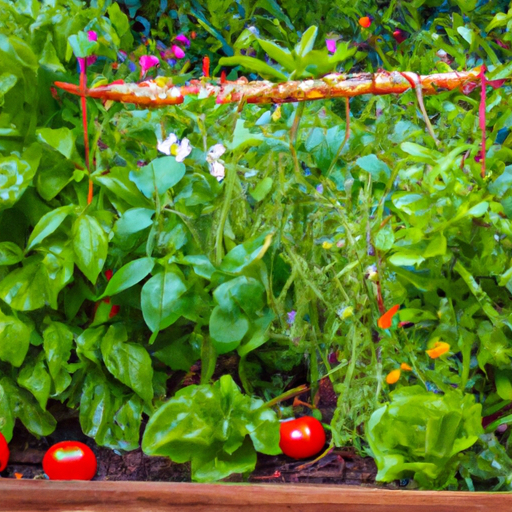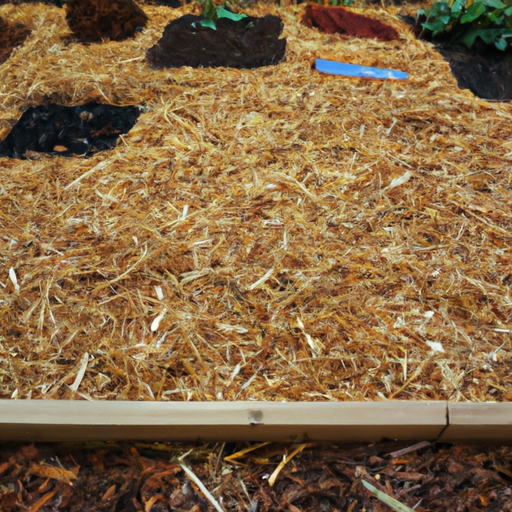As a Master Gardener, I have learned that crop rotation is one of the most effective techniques to improve soil health and increase yields. However, timing plays a crucial role in ensuring its success.
Crop rotation involves planting different crops in successive seasons on the same plot of land to prevent pests and diseases from building up, reduce soil erosion, and replenish nutrient levels. Timing is important because each crop has specific needs for growth stages such as germination, flowering, fruiting, and ripening.
Some plants like legumes fix nitrogen while others deplete it. Therefore, rotating crops at the right time can help maintain soil fertility by balancing nutrient uptake and release. Moreover, proper timing ensures that pests or pathogens do not carry over from one season to another since they thrive on specific host plants.
Overall, understanding when to rotate crops is vital in achieving sustainable agriculture practices that benefit both farmers and the environment.
The Basics Of Crop Rotation
Crop rotation is a fundamental technique in agriculture that involves the systematic planting of different crops on the same land over several seasons.
The benefits of crop rotation are numerous, including improved soil health, pest and disease management, increased yields, and reduced reliance on synthetic fertilizers and pesticides.
However, implementing effective crop rotation practices can pose certain challenges such as balancing the needs for diverse crops with profitability and ensuring proper timing to prevent soil depletion or nutrient imbalances.
Despite these challenges, successful crop rotation requires careful planning, monitoring, and adaptation to ever-changing environmental conditions.
By incorporating this technique into their farming practices, growers can achieve long-term sustainability while maximizing productivity and minimizing negative impacts on the environment.
Factors Affecting Crop Timing
Now that we’ve covered the basics of crop rotation, it’s essential to understand the importance of timing in this technique. As they say, ‘timing is everything,’ and when it comes to planting crops, this couldn’t be more true.
Proper timing can affect not only the yield but also soil fertility and pest management. Climate considerations play a crucial role here as different plants thrive under specific temperatures and humidity levels. It’s vital to know the ideal time for planting each crop so that they get enough sunlight and water without being exposed to harsh weather conditions.
Another critical factor is soil fertility; rotating crops helps replenish nutrients back into the soil, increasing its productivity over time.
Let’s take a look at some key points you should keep in mind while considering timing in your crop rotation:
– Know your climate zone: Understanding your region’s weather patterns will help determine which crops are best suited for each season.
– Plan ahead: Creating a detailed schedule allows you to maximize yields by ensuring optimal growth periods for each plant.
– Consider companion planting: Certain plant combinations work together to improve soil health while deterring pests from attacking your crops.
Remember that proper timing can make all the difference between a successful harvest or one plagued with issues like disease, low yields, or poor-quality produce. By taking these factors into account, you’ll be well on your way to achieving healthy and productive plants year after year!
Benefits Of Proper Timing In Crop Rotation
As a Master Gardener, I cannot stress enough the benefits of proper timing in crop rotation. Not only does it help maintain soil health and prevent disease buildup, but it also maximizes yields by allowing crops to take advantage of nutrient-rich soil conditions. Harvesting techniques should be taken into consideration when planning crop rotations as well, as some plants may require longer growing periods or specific environmental conditions for optimal growth. To further emphasize the importance of timing in crop rotation, let’s take a look at this table detailing the ideal planting and harvesting times for common crops:
| Crop | Ideal Planting Time | Ideal Harvest Time |
| — | — | — |
| Tomatoes | Late May-Early June | Mid-September |
| Carrots | Early spring-late summer (2-3 plantings) | Late fall-winter |
| Beans | Late spring-late summer (2-3 plantings) | Throughout summer-fall |
As you can see, each crop has its own unique timeline for successful growth and harvest. By carefully considering these factors when implementing crop rotation techniques, gardeners can ensure healthy soil and bountiful harvests year after year.
Common Crop Rotation Schedules
Now that we’ve discussed the benefits of proper timing in crop rotation, let’s take a look at some common crop rotation schedules. As a Master Gardener, I cannot stress enough how crucial it is to follow an appropriate rotation interval and choose ideal crops for each season.
Here are four reasons why:
1. Increased soil fertility: Planting legumes during one growing season can help fix nitrogen into the soil, which other crops will benefit from in subsequent seasons.
2. Pest control: Rotating crops can disrupt pest life cycles and prevent infestations from building up over time.
3. Disease prevention: Some plant diseases can persist in the soil for years, so rotating crops with different disease susceptibilities can reduce overall incidence of disease.
4. Improved yield: By choosing complementary crops and following an appropriate rotation schedule, you can maximize your yield potential while maintaining soil health.
By taking the time to plan out your crop rotations and sticking to an appropriate schedule, you’ll be rewarded with healthier plants and better harvests year after year. So do your research on ideal crop combinations and take care to observe recommended rotation intervals – your garden (and taste buds) will thank you!
Tips For Successful Crop Timing And Rotation
Did you know that proper timing of crop rotation techniques can increase yield by up to 20%? That’s right, taking the time to plan out the best sequence for your crops can have a significant impact on their growth and ultimately lead to better harvests.
As a Master Gardener, I always stress the importance of crop variety in any rotation plan. By alternating between different families of plants, you can prevent soil-borne diseases from building up in your fields while also improving overall soil health.
Along with selecting the right types of crops, it’s essential to pay attention to when they are planted and harvested. Be sure to give each plant enough time to mature fully before moving on to the next one in your rotation schedule.
With these tips in mind, you’ll be well on your way to successful crop timing and rotation – no need for fancy equipment or expensive fertilizers!
Frequently Asked Questions
How Do Pests And Diseases Affect Crop Timing In Rotation Techniques?
Pests and diseases can have a significant effect on crop timing in rotation techniques. The growth of crops is significantly impacted by the presence of pests and diseases, which can reduce yield and even result in complete crop failure.
In addition, soil fertility plays an important role in determining when crops should be rotated to maintain optimal yields. If the soil is not sufficiently fertile, it may be necessary to rotate crops more frequently or use different methods to improve soil quality.
As a Master Gardener, it is essential to understand these factors and take steps to mitigate their impact on crop timing in rotation techniques. By carefully monitoring pest and disease activity and taking steps to ensure soil fertility remains at an appropriate level, gardeners can achieve consistent success with their crops year after year.
Can Crop Timing Be Adjusted Based On Weather Patterns?
Adjusting crop timing based on weather patterns is crucial for successful crop rotation techniques. According to recent studies, farmers who consider climate considerations in their planting schedule increase yields by up to 20%.
By monitoring weather patterns such as rainfall and temperature, growers can adjust the timing of planting and harvesting crops. For instance, planting early can help avoid potential drought conditions later in the season or delaying harvest during periods of heavy rain.
As a Master Gardener, I recommend keeping an eye on local weather forecasts and adjusting your crop timing accordingly to maximize success in your garden.
How Does The Type Of Soil Affect Crop Timing In Rotation Techniques?
Soil type considerations are crucial when it comes to crop timing in rotation techniques. The impact of soil on crop yield cannot be overstated, and this is especially true for crops that require specific types of soil to grow optimally.
For example, some crops thrive in well-drained soils while others prefer heavy clays. Knowing the type of soil you have can help you determine which crops will perform best and when they should be planted or rotated.
It’s important to note that different soil types also vary in their nutrient content, so adjusting your crop timing based on soil conditions can help ensure adequate nutrients for healthy growth and maximum yields.
Are There Any Specific Crops That Require More Precise Timing In Rotation Than Others?
As Master Gardeners, we know that some crops are more finicky than others when it comes to planting schedules and crop maturity.
It’s like trying to juggle a bunch of ripe tomatoes without dropping any – timing is everything.
Certain vegetables such as corn or beans require precise planning in order to reach their full potential, while others like lettuce or spinach have a bit more leeway.
So if you’re looking to optimize your crop rotation techniques, consider the specific needs of each plant and adjust your schedule accordingly.
Can Crop Timing Be Adjusted Based On Market Demand For Certain Crops?
When it comes to crop rotation, timing is crucial. However, the market demand for certain crops can also play a significant role in determining when to plant and harvest them.
Adjusting your crop rotation schedule based on marketing strategy and seasonal availability can help you maximize profits while maintaining soil health. For example, if there’s high demand for strawberries during peak season, you may want to prioritize planting them earlier in the year and rotating other crops accordingly.
It’s essential to strike a balance between meeting market demands and following proper crop rotation techniques to ensure long-term success.
Conclusion
Overall, the importance of timing in crop rotation techniques cannot be overstated.
As a Master Gardener, I have seen firsthand how pests and diseases can wreak havoc on crops when proper timing is not implemented.
Adjusting planting times based on weather patterns and soil type can make all the difference in a successful harvest.
Furthermore, certain crops such as tomatoes and strawberries require more precise timing than others due to their susceptibility to disease.
Additionally, market demand for certain crops may also play a role in determining the ideal timing for rotation.
Ultimately, understanding the nuances of timing in crop rotation techniques can lead to healthier plants, higher yields, and greater success as a gardener.






